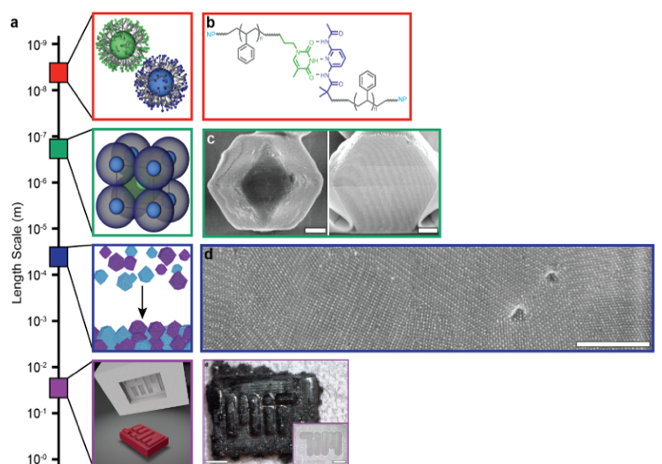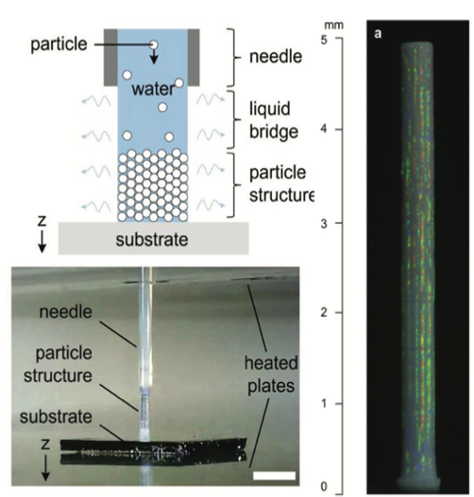Synthesis, Processing, and Structure-Property Relationships of High-Surface-Area Mesoporous Nanocomposites
Hierarchically structured materials design is a broadly applicable strategy that uses structural motifs across multiple length scales (atomic composition, nanoscale ordering, microstructure, macroscopic form) to program a material’s physical properties. The ability to manipulate material organization simultaneously at each of these length scales is critical to achieving novel physical and chemical characteristics while establishing fundamental scientific understanding of the underlying physics and chemistry concepts governing material behavior. Meso- and nanoporous materials are a key example of this need for structural control, as the amount of available surface area and pathways for molecule diffusion are both directly controlled by the size, shape, and connectivity of pore structures across the nano- to macroscopic size regimes. An informative model system is silicon, which has an exceptional capacity to store lithium. A hierarchical mesoporous framework to encapsulate silicon nanoparticles would allow for study of fundamental processes involved in the charging and discharging of capacitors, such as diffusion, adsorption, and dynamic changes to internal structure. Understanding how a mesoporous framework controls silicon particle behavior during lithium transport is vital to controlling these properties, because silicon is susceptible to undesirable reactions with electrolytes and undergoes significant volumetric expansion and compression during lithiation and de-lithiation. Each of these changes to material composition and structure degrades the active silicon material. To gain insight into the structure-property relationships that determine the electricity storage and release, and other properties of materials, this project will rationally design hierarchical architectures using pre-selected brush nanoparticles-based building blocks to construct these materials from the bottom up and then study their properties of scientific interest and for practical applications, e.g., for energy storage, filtration and separation, and catalysis.

Nanocomposite tecton processing developed in-house leads to bulk solids with simultaneous structural control across seven orders of magnitude on the length scale

Direct-write colloidal particle assembly instrumentation developed in house enabling great control in structural design & detail

